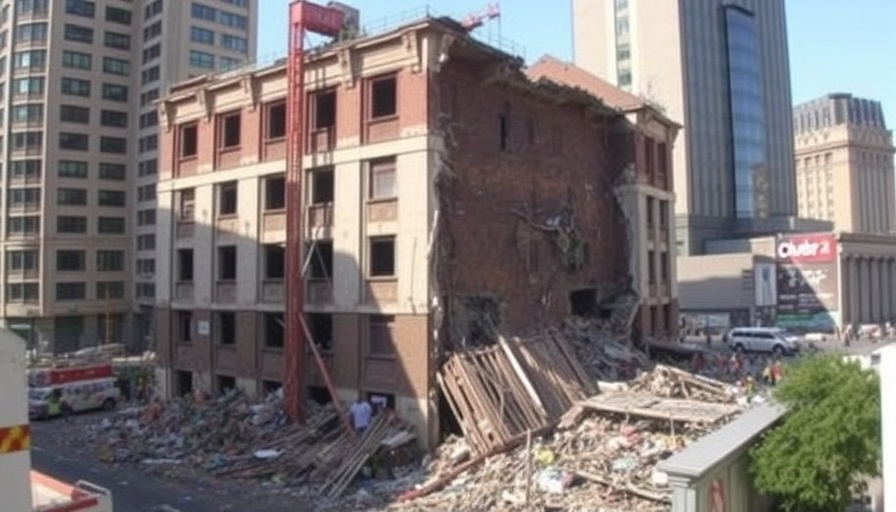
Unheeded Warnings: The Collapse of a Tragic Symbol
The recent collapse of a building in George, South Africa, has reignited discussions regarding the dire implications of structural neglect. Despite previous warnings about defects in the building's structure, those insights went unheard, culminating in this devastating incident that not only claims lives but also highlights deep-seated issues within the construction regulatory framework.
The report revealing these structural defects underscores a broader problem: the lack of accountability in both the private sector and public authorities. As South Africa grapples with high unemployment rates and strained public services, incidents like this push to the forefront urgent discussions about regulatory enforcement and public safety standards.
A Closer Look at Structural Integrity in South Africa
This building collapse shines a glaring spotlight on the construction industry in South Africa, where regulatory oversights, particularly regarding safety protocols, have become alarmingly common. As government policies struggle to cope with socio-economic challenges like the Eskom crisis and service delivery protests, the neglect in regulatory compliance not only costs lives but also erodes public trust in these essential services.
Historical Context of Building Safety Regulations
Historically, South Africa's construction industry has faced criticism regarding adherence to safety standards. Reports of previous collapses and accidents reveal patterns of neglect, often linked to corruption and state capture, where regulatory bodies fail to implement stringent safety measures due to either incompetence or malfeasance. The regulatory deficiencies surrounding this latest collapse beg the question: how many more lives could be saved with effective enforcement of safety regulations?
Future Predictions: The Road Ahead for Construction Regulations
With national elections on the horizon, this incident may provoke increased scrutiny over government policies regarding construction safety. Stakeholders are urging the government, particularly the ANC and DA, to prioritize reforms that address regulatory lapses to prevent future tragedies. Failure to act could lead to further deterioration of public infrastructure, which already suffers under the weight of chronic financial mismanagement and ongoing crises in numerous sectors.
Public Response and Accountability
The reaction to the collapse has united communities in George, sparking protests demanding accountability from local construction firms and government officials. Activists are calling for a stringent review of existing safety regulations, aiming to ensure that all building projects comply fully with safety protocols and are subject to regular inspections.
Conclusion: A Call to Action for Structural Reform
The collapse of the building in George is more than just a tragic loss; it is a clarion call for systemic reform within the South African construction industry. As citizens and professionals alike begin to mobilize for change, the government must heed these warnings and take decisive action to improve safety regulations. Only through transparent accountability and rigorous enforcement of construction standards can the nation hope to avert future disasters. Engage with your local representatives and demand they prioritize safety and integrity in our urban development strategies.
 Add Row
Add Row  Add
Add 




Write A Comment